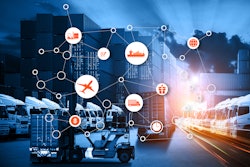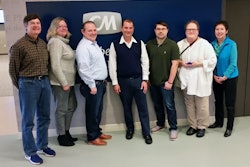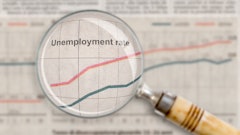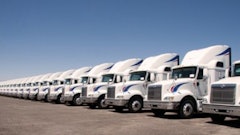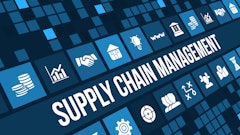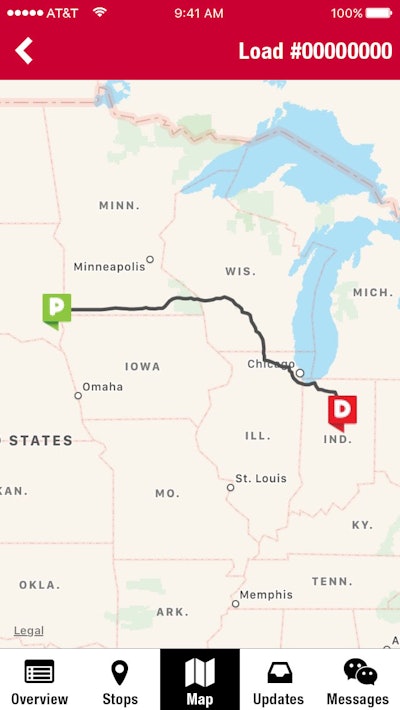
The global supply chain is changing rapidly every day, adding complexity to the roles of shippers and their third-party logistics providers (3PLs). The “I want it now” environment, formed largely out of the so-called Amazon Effect, is creating opportunities for those 3PLs willing to change and adapt to meet those consumer demands.
Many 3PLs are responding with increased capabilities and greater technological expectations—something Joe Carlier, senior vice president of sales at Penske Logistics, says is essential to the 3PL’s survival.
“Consumer behaviors have changed rapidly over the last several years, increasing the overall collective service levels within the industry. It is impossible to meet those demands without the proper technology on the front-end to execute,” he says, adding, “And those that are not investing, just won't be around.”
The 2017 21st annual Third Party Logistics Study, published by Penske Logistics in conjunction with Capgemini Consulting and Penn State University, found that IT services are becoming a differentiating factor that 3PLs are using to their advantage as fluctuating capacity, increased shipper demands and disruptions within the industry are creating a volatile decision-making environment. Though activities that are IT-intensive were outsourced to a lesser extent in the past, outsourcing in those categories significantly increased in 2016. The study found that 17 percent of shippers are utilizing IT services, compared to 11 percent last year.
“Supply chain dynamics are changing dramatically. Technology and analytics are helping shippers and their 3PLs to be more sophisticated about how they anticipate and adapt to this shifting environment,” says Donna Slyster, chief information officer, Saddle Creek Logistics Services. “The use of technology helps 3PL partners predict, or at least recognize, when exceptional events occur. Real-time dashboards show progress to plan and determine where interventions may be needed in order to meet or exceed customer expectations. Technology-assisted packaging and shipping ensure that the right product goes to the right customer on the right delivery platform within the desired delivery window at the most efficient cost, and to prevent late deliveries, real-time truck-routing analytics identify the fastest, most cost-effective routes.”
Opportunities Lie in Tech
Investing in technology and analytics is opening myriad opportunities for 3PLs as shippers continue to rely on their logistics providers for IT needs. Technologies that provide more execution- and transaction-based capabilities are among the most popular. Examples include transportation management (planning and scheduling), electronic data interchange (EDI), visibility and warehouse/distribution center (DC) management. Other commonly cited technologies include web portals, global trade management tools, bar coding, transportation sourcing, supply chain planning, network modeling and optimization, and advanced analytics and data mining tools.
And while a multifaceted supply chain creates better opportunities for the 3PL industry, it also adds a level of complexity. Gary Allen, vice president of supply chain excellence at Ryder Supply Chain Solutions, says that a complex supply chain will pose significant challenges.
“With the added complexity that our customers have to go through, it certainly means that there's an upside potential for us, but on the flip-side, we also need to keep up with what's going on in the industry, which is not an easy thing to do, because it is moving fairly rapidly,” he adds. “We have to not only stay abreast of what's going on, but we have to continually look at either partnering-up or using the technologies to enhance our services that drive improvements for our customers.”
Allen currently oversees a team devoted to research and development for Ryder System that is tasked with remaining up-to-date on market trends, as well as investing in product development innovation. In the next year, the team will be working on a number of pilots, which include autonomous forklifts, drone pilots for yard checks and inventory audits, Internet of Things (Iot) sensors, and automation of transactional activity.
In May, Ryder System launched its latest technological innovation, a cloud-based platform called RyderShare that provides customers with real-time shipment visibility, predictive alerts and exception dashboards.
The technology is accessible through a customer-facing website and mobile application that utilizes cellular and GPS technology to link shippers with onboard vehicle technologies. The system, which is currently being used by key customers in the retail and automotive industries, provides real-time visibility and event management capabilities to shippers, and delivers information updates and routing instructions to drivers.
“If they're outsourcing their transportation to us, now not only will they know where their truck is, but also what's on the truck and what time it's going to deliver, and have a proactive estimated time of arrival and delivery on an app,” explains Allen.
C.H. Robinson introduced a similar single global platform, Navisphere, about five years ago. They currently are working to extend their platform and sphere of data to be broader through web mobile and machine-to-machine communications, says C.H. Robinson Chief Information Officer Chad Lindbloom.
And like most 3PLs, another big area of focus at C.H. Robinson is supply chain visibility. “We are focused on providing real-time information to shippers in a graphical way of what’s going on or where their shipments are and down to what items do they have on those shipments,” Lindbloom says.
As a solutions-based organization, Penske utilizes a host of different technologies that can model their customers’ networks.
“We’re modeling off of their current environment or projected forecast volumes, creating the model to meet their expectations—may it be cost or service,” Carlier says. “We try to align the technology to the service requirements or the needs of the operation.
“We build a scope of operations, a statement of work, per se, and really understand a day in the life of their order, and what is necessary in regards to technology,” he adds. “Usually you don't want to put a super-robot technology into an application that needs very simplistic tools, which drives cost and complications.”
Utilizing Big Data and Analytics
Both 3PLS and shippers are increasingly using information and analytics to drive their decisions. Nearly three-fourths of shippers (71 percent) said real-time analytics from 3PLs help them better understand shipping alternatives, and 61 percent valued 3PLs' assessments of trade lanes and origin-destination pairs in terms of cost and service levels.
In this year's Third Party Logistics Study, nearly all 3PLs (98 percent) said improved, data-driven decision-making is essential to the future success of supply chain activities and processes, and 93 percent of shippers agreed. Both groups—86 percent of 3PLs and 81 percent of shippers—said the effective use of big data will become a core competency of their supply chain organizations.
“Our customers are looking at us as the experts to execute that supply chain, and they're less interested in the brand of the technology that we're using, rather the execution capability,” notes Carlier. “Now, what they are interested in is how we collect data throughout their supply chain, what we do with that data, and how we present that data back to them.”
Carlier adds that the more data they can collect throughout the supply chain, the better model they can build. “So, how can I use what is happening in the data to determine what is going to happen, to present the most cost-effective solution?”
Besides being able to effectively use big data and compile worthwhile analytics, one of the biggest challenges 3PLs are seeing is in regards to data silos. According to TechTarget, a media company who provides data analytic services for target sales and marketing efforts, a data silo is a repository of fixed data that remains under the control of one department and is isolated from the rest of the organization, much like grain in a farm silo is closed off from outside elements.
Because the 3PL may only be the trucking provider, they cannot see the data that is being serviced from other providers—whether it be by ocean, air or at the warehouse.
“We’ll collect the data relative to the piece of business that we’re executing, but it’s very limited to one particular segment. The challenge with big data is, ‘How do we collect all the relevant data from all the different sources?’” Carlier emphasizes.
He does believe, however, that 3PLs as an industry have become great at understanding what to do with big data. The problem simply lies with the logistic provider’s ability to get all of the necessary data within the supply chain into a central depository where they are then able to do something with it.
Carlier says collaboration and good partnerships may be the answer to big data’s challenges. “The more that Penske gets embedded with a customer, the more access we can have to the data. That’s where we have differentiated ourselves over the years. Not being a single source provider, but really focusing on the value that we can drive for our customer through modeling, solutions and data analytics.”
He adds: “There is significant opportunity in collaboration. The further upstream that we can get, ultimately, the better end result or optimized network.”
Room for Improvement
And while the "IT Gap"—the difference between how important shippers feel IT capabilities are (91 percent) and their ratings of their 3PLs' current IT capabilities (65 percent)—has stabilized, further opportunities for improvement remain.
One of those challenges is finding the right employees who understand data and can provide the diagnostics and dashboards to back operations, as well as customers.
Technology and analytics are key elements in an industry that has been historically late to adopt new technological approaches to cargo execution. Two factors influence this behavior, says Michael Pedersen, manager, Solutions Development, Yusen Logistics (Americas) Inc.
“The first being investment, as the margins in logistics have historically not been robust, risk must be clearly mitigated in order to justify capital investment for new IT. The second can be traced to the demographic that makes up the core of the transportation industry’s workforce,” he notes. “The logistics field has typically not drawn young entrepreneurial talent who are willing to take big risks and change the game. Many logistics companies are owned and run by older professionals who may have learned the industry in the cab of a truck. This is probably not as true now as it was in the past, but as a 25 year veteran of the logistics industry, I have learned a lot of what I know from individuals who learned the industry from the road up.”
Allen and Carlier agree, emphasizing the value of the users of such technology.
“The right operating structure is the next critical piece with the right training, enablers and people,” says Allen. “Technology is just a tool. If you’re not training and developing your talent across your organization, there’s going to be a gap pretty quickly.”
Adds Carlier: “You have to have a very efficient supply chain in order to meet the demands of the customer. You cannot have a very efficient supply chain without, not just the technology, but the users of that technology,” Carlier says. “Technology is great, but not if you're not able to use it effectively.”




